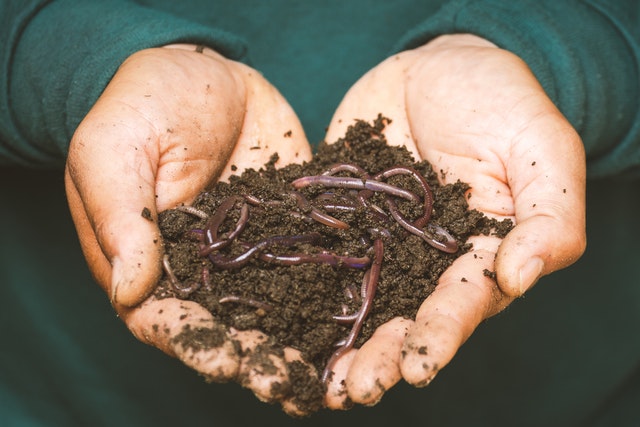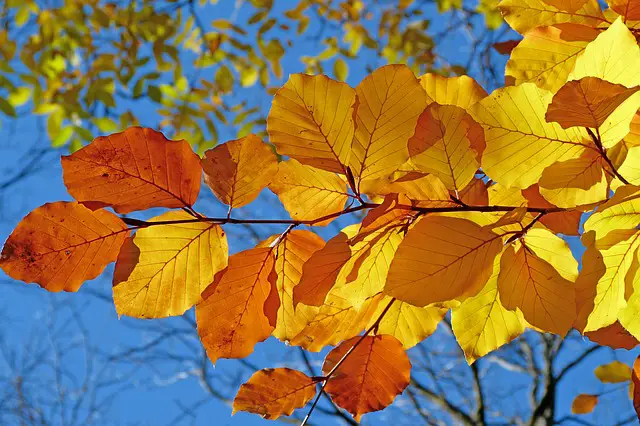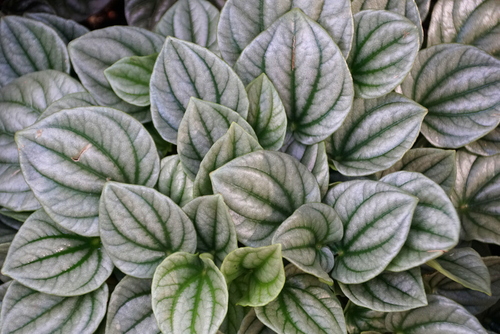Peperomia is a low-maintenance plant that purifies the air and brings good luck when grown inside your house. Yet, there’s some confusion about the peperomia silver ripple vs. frost species that might confuse novice plant lovers.
Although both species belong to the same plant family, there are several differences that set them apart, and in this article, we’ll highlight these differences to help you pick the right plant for your indoor garden.
Peperomia Silver Ripple vs. Frost Summary of Main Differences

The main difference between these two species is in the shape of the leaves. The silver ripple plant has heart-shaped leaves with silver and green tinges, while the frost plant has less wavy dark blue-green leaves with a snowy coating.
Both plants are quite similar, but the peperomia silver ripple is slightly more tolerant of dryness and heat because the leaves are more succulent.
| Peperomia Silver Ripple | Peperomia Silver Frost | |
| Leaf Color | Silvery corrugated heart-shaped leaves with tinges of silver and green | Dark blue-green leaves with a frost covering and dark green leaves |
| Stem Color | Red | Green |
| Variegation | Streaks of silver or cream | Silver streaks |
| Flower | Green | White or cream |
Peperomia Silver Ripple vs. Frost Differences
Peperomia silver ripple and frost are two beautiful plant species, and understanding the features of each type will help you pick the right one for your home. These two plants represent a genetic mutation of one species, resulting in some differences that we’ll discuss in the following section.
1. Origin and Name
The peperomia plant comes from the Amazon region of South America, where it’s native to Brazil, growing in the shade of large trees. The name itself means the plant that resembles peppers, with other common names like pepper elder and baby rubber plant.
The silver ripple variety is named after the tinges of green and silver that cover the leaves in a rippled fashion. The frost variety is named after the frost covering that covers the leaves.
2. Taxonomy
The silver ripple and frost plants belong to the Piperaceae or pepper family. Both species are mound-forming evergreen perennials that grow in tropical and subtropical regions.
The silver ripple species is called Peperomia caperata, while the frost species is called Peperomia caperata frost.
3. Shape & Appearance
Both plants belong to the same family, so there’s no big difference in the way they look. However, the silver ripple cultivar has thin and wavy, while the leaves of the frost type are upright and thick.
4. Differences in Color
This is the biggest difference between the two types of peperomia. The heart-shaped leaves of the silver ripple cultivar are rippled, ruffled, or waved, with silver wrinkles covering the leaves.
The peperomia frost looks like frozen watermelons with green rinds that appear through the frost coating.
5. Leaf Size and Texture

The leaves of the silver ripple cultivar are slightly smaller with a thick succulent-like texture. The peperomia frost leaves are larger and not as fleshy.
6. Height and Growth Rate
The silver ripple plant can reach a maximum height of 8 inches in the right conditions. The peperomia frost reaches a maximum height between inches and one foot.
These two species are slow-growers and can be grown inside or outside, as long as you pay attention to their growing needs.
7. Flowers
Peperomia flowers aren’t showy, as they usually resemble narrow stalks. The peperomia silver ripple blooms are usually green but can also be brown.
The peperomia frost flowers are small creamy flowers. After the blooming season, it’s best to cut these flowers because they consume the plant’s energy and affect its growth.
8. Temperature and Climate
Both species of the peperomia plant prefer to grow in slightly hot and humid conditions, resembling the growing conditions in the tropical region of the Amazon. However, due to the succulent nature of the silver ripple cultivar, this plant is slightly hardier than the frost species.
The silver ripple plant is more tolerant of drought, so it will work for you if you live in a drier climate. The peperomia frost plant is quite delicate, so it won’t be able to tolerate harsh weather conditions.
For both species, it’s best to maintain adequate temperatures between 60 and 80 degrees Fahrenheit. Unfortunately, the peperomia plant won’t be able to survive freezing temperatures, and cold temperatures can affect its growth.
9. Light, Water, and Soil

Both species of the peperomia plant can survive in medium or even low sunlight, so they’re perfect for your home or office. They’d benefit from exposure to some direct sunlight in the early morning and evening but can also grow in fluorescent lights.
However, the silver ripple plant is more tolerant of light, so it can handle being placed near a north-facing window. Direct sunlight can scorch both types of peperomia, but the frost species is more delicate.
These plants don’t need regular watering, as they get to suffer from root rot if you water the soil too often. The silver ripple cultivar is more tolerant of drought because the fleshy leaves can hold more water than the leaves of the peperomia frost.
Both plant species must be planted in a well-draining potting mix or soil. The soil should be light and slightly acidic to support the plant’s growth. However, the silver ripple plant can handle dry soil more than the peperomia frost.
10. Fertilization
Both species don’t require much feeding and will grow well as long as you provide them with the right growing needs. However, you can add some diluted plant food to your peperomia frost if you want this plant to grow healthily.
The silver ripple cultivar doesn’t need much feeding, except maybe at the beginning of the growing season before the plant has established itself.
Peperomia Silver Ripple vs. Frost Similarities
Since these two plants belong to the same family, there are several similarities that might confuse plant lovers. Here are some of the similarities between the peperomia silver ripple and peperomia frost.
1. Sunlight

Both species prefer to grow in indirect sunlight when grown indoors and in some shade when grown outside. It’s important to use a sheer curtain if you’re placing your plant pot near a south-facing window to protect the leaves from getting scorched.
2. Watering
To keep your peperomia silver ripple and peperomia frost healthy, you need to water the plant when the soil is slightly dry. These plants won’t tolerate growing in soggy soil.
3. Humidity & Temperature
These species thrive in moderate temperatures and humidity. This is why they’re excellent house plants, as the ambient temperature and humidity will help these plants grow. However, to help them stay healthy, you might want to move them to the kitchen or bathroom, where there are higher levels of humidity.
4. Potting and Soil
You can plant your silver ripple or frost cultivar in an orchid potting mix which provides good draining. They thrive in slightly acidic soil, and you can improve draining by adding peat moss or perlite.
5. Fertilizer

Both the silver ripple and the frost plants aren’t heavy feeders, so adding fertilizers isn’t necessary as long as the soil is healthy. If the soil is exceptionally poor, you might need to fertilize the plant once a month during the growing season, using a diluted formula.
However, excessive fertilizing can make the plants leggy and affect their growth.
6. Natural Habitat
The peperomia silver ripple and frost species thrive in the shade of big trees in their natural habitat. This is why both plants are suitable for your indoor garden, especially if you don’t get a lot of sunlight.
Common Problems For Both Plants
Peperomia plants are rather hardy and don’t suffer from many issues. However, if you ignore your plant or the growing conditions aren’t suitable, it might suffer from several problems.
1. Slow or No Growth
This usually happens because the plant isn’t receiving enough sunlight. It’s true that the peperomia plant doesn’t need a lot of sunlight exposure, but it can’t grow in the dark. Therefore, it’s important to expose your plant to adequate filtered sunlight to promote growth.
2. Drooping Leaves with Brown Tips
The leaves of your peperomia plant can change color and turn brown if you’re exposing the plant to too much sunlight. The excessive sunlight exposure will burn the leaves, causing them to droop and turning them brown. Eventually, the plant will die.
This can also happen if the plant is dehydrated. You can place the plant pot in a tray filled with water and pebbles to provide the plant with more humidity.
3. Curled Leaves
The leaves of the plant will curl when it’s dehydrated. When you’re not watering your peperomia as needed, the plant will curl its leaves to reduce the surface area and decrease the amount of water vapor that evaporates to retain more moisture.
To avoid this issue, you should examine the soil and water your plant when the soil feels dry. You’ll need to water your peperomia more often in spring and summer.
4. Yellow Leaves

The leaves of your peperomia can turn yellow if you’ve been overwatering or underwatering your plant. Likewise, your peperomia leaves can turn yellow if the plant needs to be fertilized.
5. Limping Stems
This is probably a sign that your plant is suffering from root rot due to excessive watering. You can leave the soil to dry a little before watering again, or you might need to clip off the rotten roots and transfer your plant to a new pot.
Other similar posts:
Summary
In our peperomia silver ripple vs. frost comparison, we explained that both plants belong to the same family, and they have a lot in common. However, the silver ripple species has heart-shaped green and silver leaves, while the frost species show off frosty, snowy coat that covers the dark green leaves.
Both species will be a great addition to your indoor garden, as these plants thrive in partial shade. However, the peperomia silver ripple is slightly more tolerant of harsh weather.
Frequently Asked Questions
What is Peperomia Frost?
This is an attractive species of peperomia caperata with green leaves covered by a frost coat.
Does Peperomia Frost grow faster?
Like most types of the peperomia plant, the frost type is a slow-grower. This is good news for busy homeowners, as you don’t have to repot your plant that often.

Hey, I’m Lisa and I’ve been an avid gardener for over 30 years. I love writing, talking and living in the garden! Feel free to connect with me on my socials below

